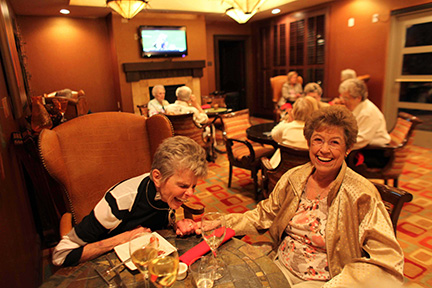blog

Six Key Trends Emerging in Non-Acute Care
The Q2 2016 PX Advisoris focused squarely on Non-Acute Care. This post excerpts an article by Robin Rose, MBA, Vice President, Healthcare Research Group, HealthStream.
Non-acute care is often confused with the terms “long-term care” and “post-acute care,” which are actually subsets of non-acute care. The following table shows the care types that are included under the umbrella of non-acute care:
- Adult Day Care
- Behavioral and Mental Health
- Home Health
- Hospice
- Long Term Acute Care
- Long Term Care
- Outpatient Clinics
- Palliative Care
- Physical Therapy
- Physician Office Care
- Rehabilitation
- Residential Care Communities
- Substance Abuse
- Surgery Centers
Following are some key facts and trends about this increasingly important sector of the healthcare industry:
Two-thirds of those age 65+ will need some type of long term care
Unlike most healthcare, long-term care is focused not on curing an illness but rather on allowing individuals to attain and maintain an optimal level of functioning. It is a “wide array of medical, social, personal, and supportive housing services needed by individuals who have lost some capacity for self-care because of a chronic illness or disabling condition” (U.S. Senate Special Committee on Aging, 2000).
Post-acute care is under increased CMS scrutiny
A 2013 Institute of Medicine (IOM) report concluded that some 73% of the variation in Medicare spending is attributable to care provided in the PAC setting. As a result, CMS is taking several steps to reign in cost from this sector. Beginning in FY2018, skilled nursing facilities will suffer financial penalties if their hospital readmission rates are higher than expected. CMS has also just instituted a mandatory hip and knee replacement bundled payment program in selected markets in the U.S. The payment bundle includes the inpatient care for the joint replacement surgery and all additional care provided during the 90-day period following discharge.
The nursing home model of care is on the decline
A number of new housing trends are redefining the traditional nursing home model, providing a variety of options for aging seniors. As our population ages, there is an increasing clamor for more affordable and more enriching living experiences for senior adults.
SNFs want to be high-value partners
According to the American Hospital Association, skilled nursing facilities (SNFs), particularly those in markets with an ACO, are taking a number of steps to position themselves as high-value providers. They are making changes to demonstrate SNFs can be good partners in the new value-based healthcare environment.
Ambulatory surgery centers want to be partners too
As with SNFs, ambulatory surgery centers (ASCs) are morphing into new entities that are more attractive in a value-based marketplace. Traditionally, ASCs have focused narrowly on a set of services that could be delivered more efficiently and less expensively in an outpatient setting— such as endoscopies, some biopsies, catheterizations, minor surgery, childbirth, plastic surgery, and eye care. However, recent advances in minimally invasive surgery and pain management have led to more complex cases being performed safely in an outpatient environment. Some of these more complex surgeries include total joint replacements, spinal surgeries, and bariatric surgery.
Staffing will be a major challenge for home care providers
In 2013, an estimated 1.3 million home health aides were in the process of entering the job marketplace, with 50% growth in demand expected on top of that by 2018. This growth makes the home health market one of the fastest growing fields in the U.S. (Halvorson, 2013). Many see wages as a key challenge moving forward. According to a recent report in the Lubbock Avalanche-Journal, nearly half of all home care workers live at or below the poverty line. Many rely on government benefits such as food stamps, and make as little as $9.70 per hour—that’s 4 cents less per hour than fast-food workers.
“The Internet of Caring Things” is on the horizon
A recent Gartner study predicted that there would be 6.4 billion connected things (mostly personal computers, smartphones, and tablets) in 2016 but that this number is likely to explode to 20.8 billion by 2020. We need to prepare ourselves for a time in the not-too-distant future when there is a growing number of healthcare devices that are wirelessly connected to the cloud. There is even a buzz-word for this eventuality: The Internet of Caring Things. It is very likely this Internet of Caring Things will redefine how healthcare is delivered. Care may no longer be the result of an annual physical but rather the result of a 24/7/365 process.
Conclusion
As the above seven trends show, the non-acute world is in flux. Providers in this sector are struggling with increasing demand due to an aging population, the absorption of new technology, the difficulty of documenting outcomes, and the pressure to integrate to offer services that span the continuum of care. Five years from now, non-acute care will look very different than it does today.
Complete the Form below to download the complete issue and article.
